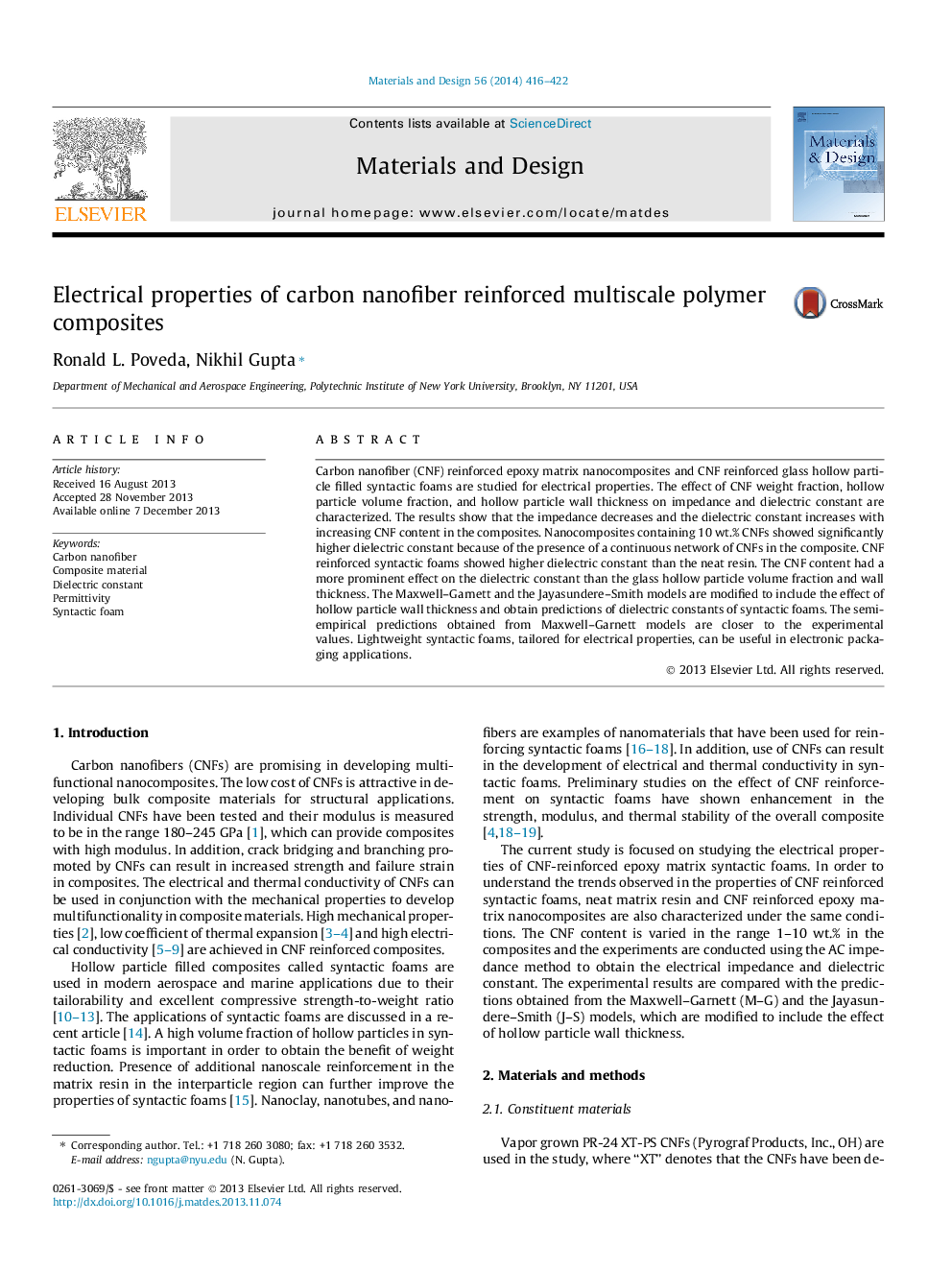| Article ID | Journal | Published Year | Pages | File Type |
|---|---|---|---|---|
| 829458 | Materials & Design (1980-2015) | 2014 | 7 Pages |
•Using carbon nanofibers (CNFs) and glass hollow particles in multiphase composites.•The dielectric constant (ɛ) of composites increases with CNF content.•Interconnected network of CNFs at high volume fraction exponentially increases ɛ.•Two theoretical models accurately predicted data trends of CNF/syntactic foams.
Carbon nanofiber (CNF) reinforced epoxy matrix nanocomposites and CNF reinforced glass hollow particle filled syntactic foams are studied for electrical properties. The effect of CNF weight fraction, hollow particle volume fraction, and hollow particle wall thickness on impedance and dielectric constant are characterized. The results show that the impedance decreases and the dielectric constant increases with increasing CNF content in the composites. Nanocomposites containing 10 wt.% CNFs showed significantly higher dielectric constant because of the presence of a continuous network of CNFs in the composite. CNF reinforced syntactic foams showed higher dielectric constant than the neat resin. The CNF content had a more prominent effect on the dielectric constant than the glass hollow particle volume fraction and wall thickness. The Maxwell–Garnett and the Jayasundere–Smith models are modified to include the effect of hollow particle wall thickness and obtain predictions of dielectric constants of syntactic foams. The semi-empirical predictions obtained from Maxwell–Garnett models are closer to the experimental values. Lightweight syntactic foams, tailored for electrical properties, can be useful in electronic packaging applications.
Graphical abstractFigure optionsDownload full-size imageDownload as PowerPoint slide
